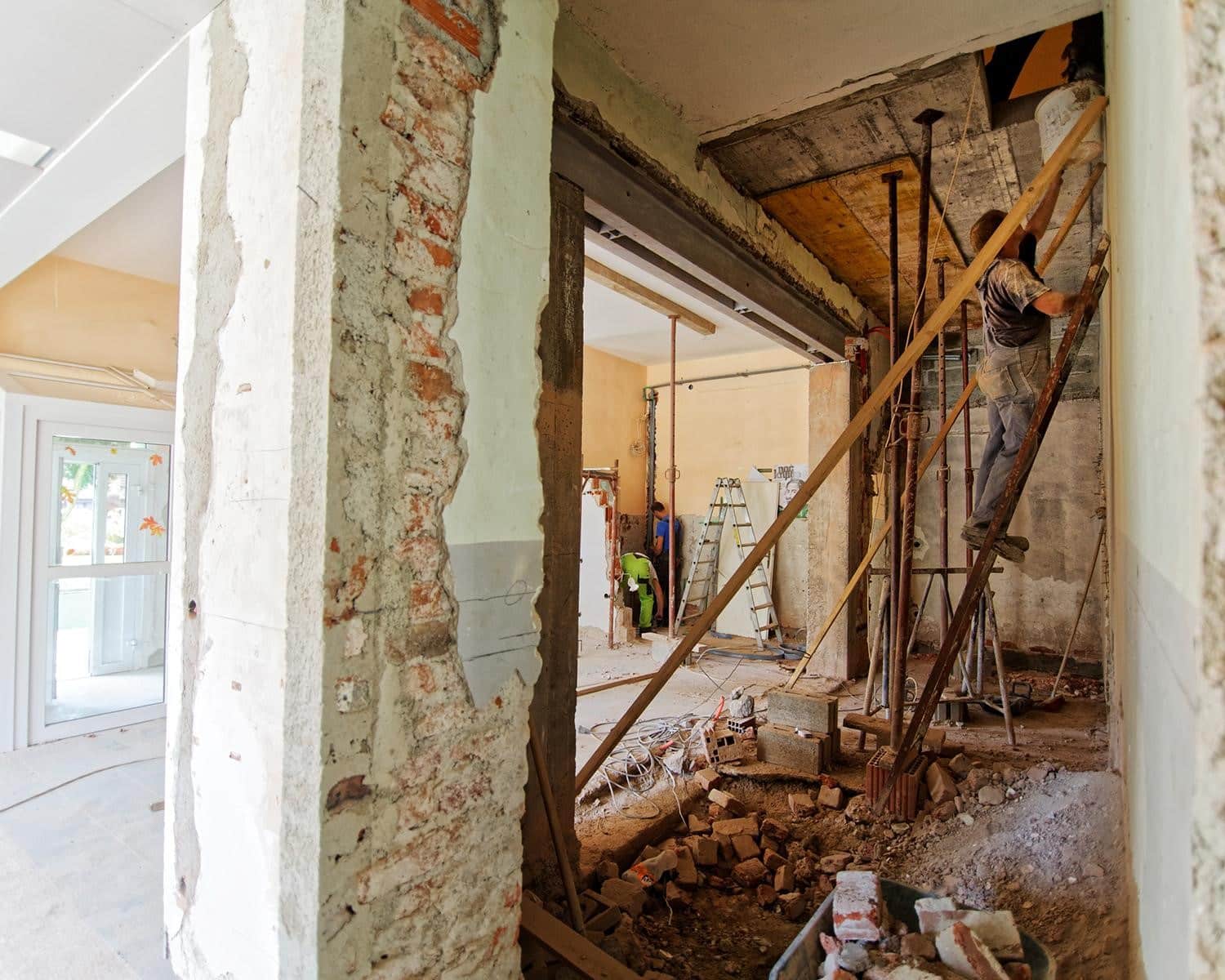You have to make a choice when you invest in property. Do you invest to generate a regular yield? Or, do you invest for capital growth? This article tells you everything that you need to know about investing for capital growth.
Every property investor asks themselves the same thing before they get into the market.Should I invest for growth or yield when buying property?It’s not a question that you can ignore. In fact, your decision shapes your entire investment philosophy. It will form the basis of your business plan and your exit strategy.Investing for yield means that you’re looking to generate a regular income from the property. This usually means buying in an established area that offers plenty of demand. The downside to this is that you’ll have to buy peak properties to generate a yield. You spend high and make very little when you sell the property later on.Investing for capital growth flips the script. You place your focus on the profit you make when you sell, rather than the money you generate during ownership. This completely changes the way that you handle the investment. You’re looking to invest in areas that have potential for growth when you invest for capital growth. This doesn’t always guarantee high yields. But if you get it right, you’ll earn a big lump sum in the end.This article examines everything you need to know about investing for capital growth. This includes what it actually means, the pros and cons of the tactic, and some tips.
What is Investing for Capital Growth?
When you invest for capital growth, you’re aiming to make a profit from the sale of your asset. In the case of property, this means that you’re relying on the market to work in your favour. You want to buy a property for as little as possible, then sell it for as much as possible later on.Many call this a “buy and hold” strategy. You purchase the property and then wait. The amount of time you wait depends on your strategy and the market. Those looking for short-term gains might sell in five years. Those playing a longer game may wait as many as 20 years before selling. The key is that this waiting period allows the property’s value to grow. You then benefit from this when you choose to sell.Several factors play a role in this strategy. Moreover, the nature of investing for capital growth changes depending on your outlook.For example, those looking for short-term gains may buy a property and then renovate extensively. They’ll then sell the property within five years of buying it. When done well, this earns a small profit, which you can put towards the next property. You keep doing this, buying slightly better properties each time, until you’re generating a healthy profit. Many call this technique house flipping.Others go for a more long-term option. They buy the property and then wait for the market to favour them. In these cases, you need even stronger local knowledge. Investing for capital growth in the long term means finding areas that have potential to grow. The key is that they have yet to realise that potential. This allows you to buy low and wait. Once the area realises its potential, you can sell for a much higher price because the property becomes more desirable.And that’s the most important thing about investing for capital growth. You need to buy a property that future buyers will want.
The Pros of Investing for Capital Growth
There are several reasons why you may choose the capital growth route over investing for yield. They include the following:
- The Australian property market is among the strongest in the world. Since the mid-1980s, the value of property has enjoyed an average increase of just over 7% every year. The capital growth strategy is a long-term strategy that has proven results.
- You can influence the value of your property. As well as just waiting for the property to increase in value, you can make changes that make it more desirable. For example, installing energy-efficient technologies future-proofs the property. An increasingly environmentally-aware market will appreciate such changes when you come to sell. Other renovations, such as building a new bathroom or kitchen, can further increase the property’s value.
- Investing for capital growth allows you to generate positive equity faster. You can then leverage this equity to buy other properties. The end result is the ability to build a property portfolio faster.
- You can still earn a yield from the property. Granted, it may not be as high as the yield you’d get from a property in a more established area. But there’s nothing to stop you from renting a property out while maintaining a capital growth-focused strategy.
- Generally speaking, you’ll pay less income tax when investing for capital growth than you would when investing for yield. The property generates less income, but you can still make similar tax claims.
The Cons of Investing for Capital Growth
Unfortunately, focusing on capital growth isn’t all positive. There are several issues that you have to deal with to make this strategy successful. They include the following:
- You’ll either generate no yield or less yield from your property. This lack of income can place a burden on your finances. Remember that you still have a mortgage to repay on the property. If it’s not generating enough money to deal with those bills, you have to dip into your other income sources to handle them.
- Making the wrong choices can cause issues later on. For example, you may invest in an area under the belief that it’s going to grow. But that may not always happen. In these cases, your property won’t earn a profit when you sell. One mistake in your research may be all that it takes to thwart a successful capital investment.
- Trying to flip a property can also lead to you running over budget. If you underestimate the amount of money you need to carry out the work, you run into serious problems. You won’t be able to finish the work, which means it doesn’t contribute to the property’s value. Furthermore, you could end up spending so much that you can’t make your mortgage repayments. This may result in you defaulting on your home loan.
Tips for Successful Capital Growth Investment
As you can see, investing for capital growth presents some difficulties. You need financial stability to consider this tactic. Having strong finances allows you to pick up the slack when the property isn’t generating enough yield to handle its bills. But if you get it right, you can make an excellent profit on the eventual sale.Of course, a few extra tips never hurt anybody. Here’s some useful advice for those who decide on a capital growth strategy.
Tip #1 – Get a Depreciation Schedule
Some aspects of your property, and the assets it contains, depreciate in value over time. The good thing is that you can claim this depreciation off your tax bill.Have a Quantity Surveyor visit the property and create a depreciation schedule. This schedule tells you exactly what you can claim for. Moreover, it tells you the best way to structure your claims to get the most out of the property’s assets. Do this whenever you make a significant investment in the property.
Tip #2 – Don’t Skimp on Research
Research is key, regardless of which strategy you choose. Making mistakes early on will come back to haunt you later. The problem with capital growth is that these mistakes often don’t become apparent until several years have passed.Work with as many property professionals as you can to find properties that have potential. You’re looking for the locations that are most likely to enjoy growth in the coming years. Moreover, your property must have features that make it attractive to buyers. These could include its proximity to schools or the features of the property itself. Research the location and learn what your target market wants. Consider several properties and weigh up the pros and cons of each.
Tip #3 – Get a Valuation
Many new investors confuse appraisals with valuations. A real estate agent’s appraisal only tells you how much the property may be worth in the current market. A valuation digs into greater detail.A proper valuation tells you about the value of the land and takes depreciation into account. It also accounts for things like construction costs for any improvements made. This ensures that you don’t spend too much on a property.
Tip #4 – Cheap Isn’t Always Better
Cheap properties should always raise red flags. A low price tag usually means that there’s something wrong.The property may have major structural issues, which will cost you thousands of dollars to repair. Or, it may be the wrong type of property for the local market.It all comes back to the old adage. If it looks too good to be true, it probably is. Don’t immediately pounce on something that looks like a bargain. Instead, spend more time on your research so you can figure out why the price is so low.
Tip #5 – Know Where to Renovate
Smart renovations can boost your property’s value. But spending in areas that don’t appeal to your target audience will lower your eventual profit.The kitchen and bathroom are usually prime candidates for renovations. Furthermore, many buyers look for storage space in their properties. Renovations that create such space usually help you to earn more when you sell. Moreover, think about the future. Installing energy-efficient technologies can help you to modernise a property and prepare it for future use.The key is to figure out which renovations work for your property and which are just things you’re doing to make the property appeal to you.
The Final Word
Investing for capital growth offers a few pitfalls. But there’s a lot of money to make, if you get it right. Conduct extensive research and make sure the property appeals to future buyers. Invest in smart improvements and ensure that you have the funds to deal with the extra costs that come from this tactic.Your first step should always be to find the right property professionals to work with. That’s where Cohen Handler can help. We have years of experience helping investors find suitable properties for capital growth. Contact us today to arrange a conversation with one of our buyer’s agents.

